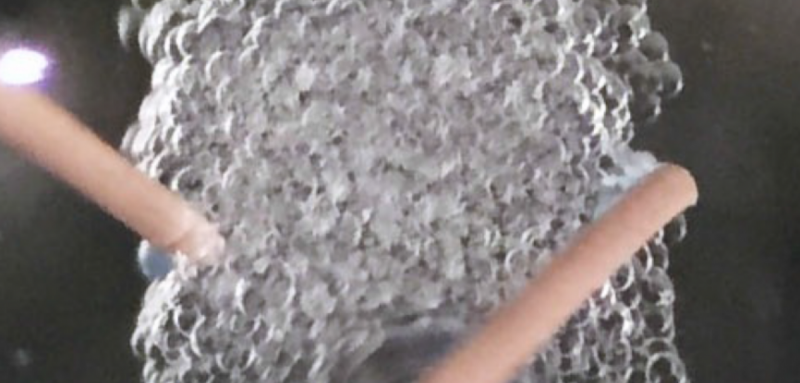April 4, 2016 report
Researchers develop synthetic tissue with light-activated communications

(Phys.org)—A team of researchers with Oxford University has developed a type of synthetic tissue made of synthetic cells that are able to communicate with one another. In their paper published in the journal Science Advances, the team describes how they developed the tissue by expanding on prior research, how such tissues could be used and the ways they are looking to improve the material.
Scientists have been looking for ways to create synthetic cells and thereby tissues for many years; the idea is that it could be used to replace tissue in living organisms that don't work properly. It could also be used to work with existing real tissue to provide new capabilities, such as delivery of drugs when needed. In this new effort, the researchers report on a process they have developed that allows for the creation of a synthetic tissue whose cells are able to communicate with one another via electrical signals, in a way the resembles the way neurons communicate.
As the team explains, the tissue is created using a 3D printer—it prints hundreds of individual synthetic cells which forms the tissue. Each of the cells is a droplet of water encased in a lipid, and each cell has a bit of DNA in it that has been programmed to react to light. Each cell also has protein pores in it that when activated by the DNA, allows for the passage of ions from the cell to another cell that it is physically touching. The result is a synthetic tissue made of synthetic cells in it that can be caused to communicate with other cells in the same tissue by using a simple light source. Communications can be controlled by controlling which part of the tissue is exposed to the light and when.
At the present time, the tissue is still experimental, though it represents progress in creating truly useful synthetic tissue types. The team acknowledges that there are still some hurdles to overcome before their tissue could used in actual applications—it needs to be altered in some way, for example, to allow the synthetic tissue to communicate with real tissue and it needs to be changed to work in other aqueous environments. The team is also looking to increase the complexity of the tissue as well to allow for more functionality.
More information: M. J. Booth et al. Light-activated communication in synthetic tissues, Science Advances (2016). DOI: 10.1126/sciadv.1600056
Abstract
We have previously used three-dimensional (3D) printing to prepare tissue-like materials in which picoliter aqueous compartments are separated by lipid bilayers. These printed droplets are elaborated into synthetic cells by using a tightly regulated in vitro transcription/translation system. A light-activated DNA promoter has been developed that can be used to turn on the expression of any gene within the synthetic cells. We used light activation to express protein pores in 3D-printed patterns within synthetic tissues. The pores are incorporated into specific bilayer interfaces and thereby mediate rapid, directional electrical communication between subsets of cells. Accordingly, we have developed a functional mimic of neuronal transmission that can be controlled in a precise way.
Journal information: Science Advances
© 2016 Phys.org


















